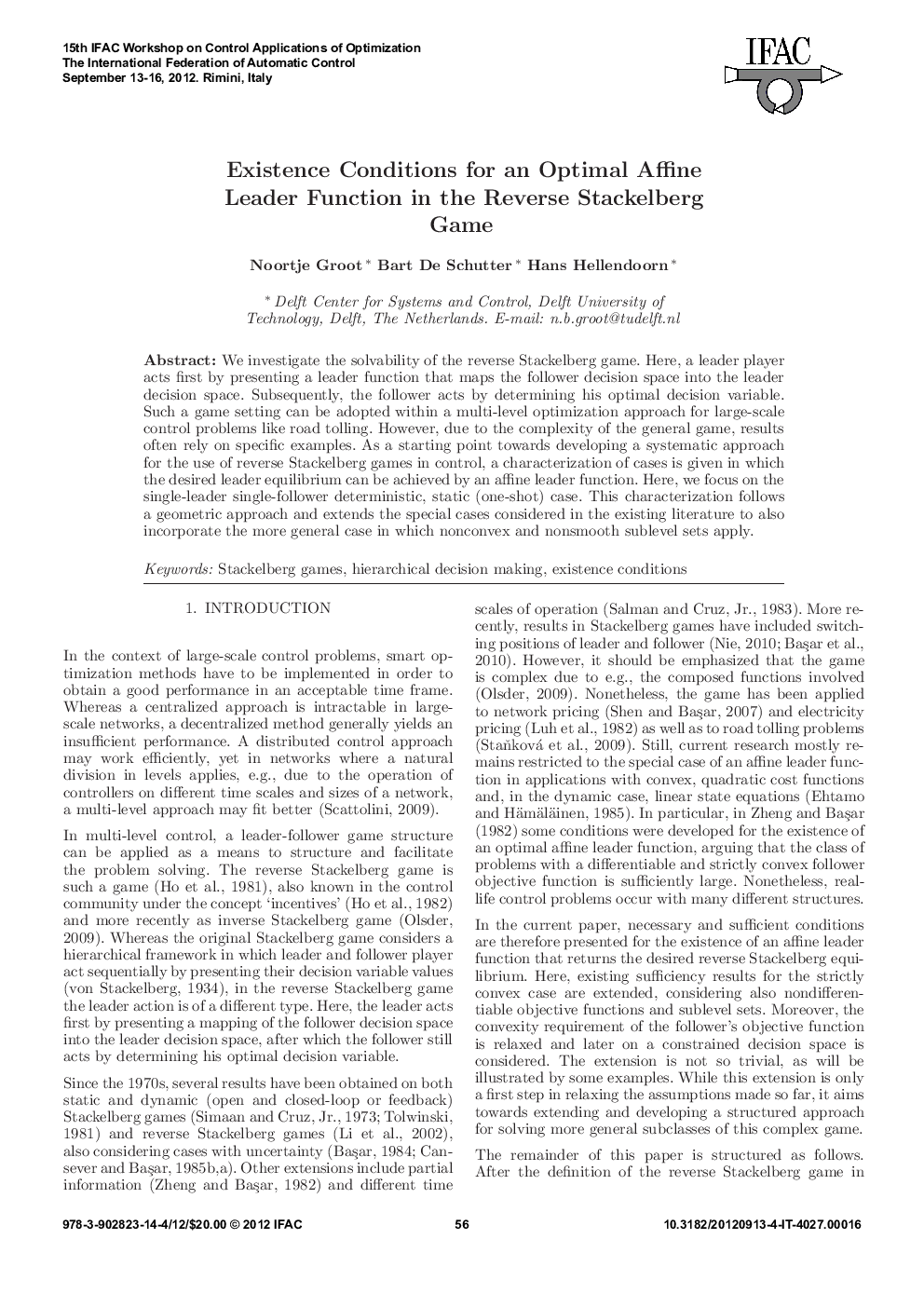| Article ID | Journal | Published Year | Pages | File Type |
|---|---|---|---|---|
| 717543 | IFAC Proceedings Volumes | 2012 | 6 Pages |
We investigate the solvability of the reverse Stackelberg game. Here, a leader player acts first by presenting a leader function that maps the follower decision space into the leader decision space. Subsequently, the follower acts by determining his optimal decision variable. Such a game setting can be adopted within a multi-level optimization approach for large-scale control problems like road tolling. However, due to the complexity of the general game, results often rely on specific examples. As a starting point towards developing a systematic approach for the use of reverse Stackelberg games in control, a characterization of cases is given in which the desired leader equilibrium can be achieved by an affine leader function. Here, we focus on the single-leader single-follower deterministic, static (one-shot) case. This characterization follows a geometric approach and extends the special cases considered in the existing literature to also incorporate the more general case in which nonconvex and nonsmooth sublevel sets apply.
